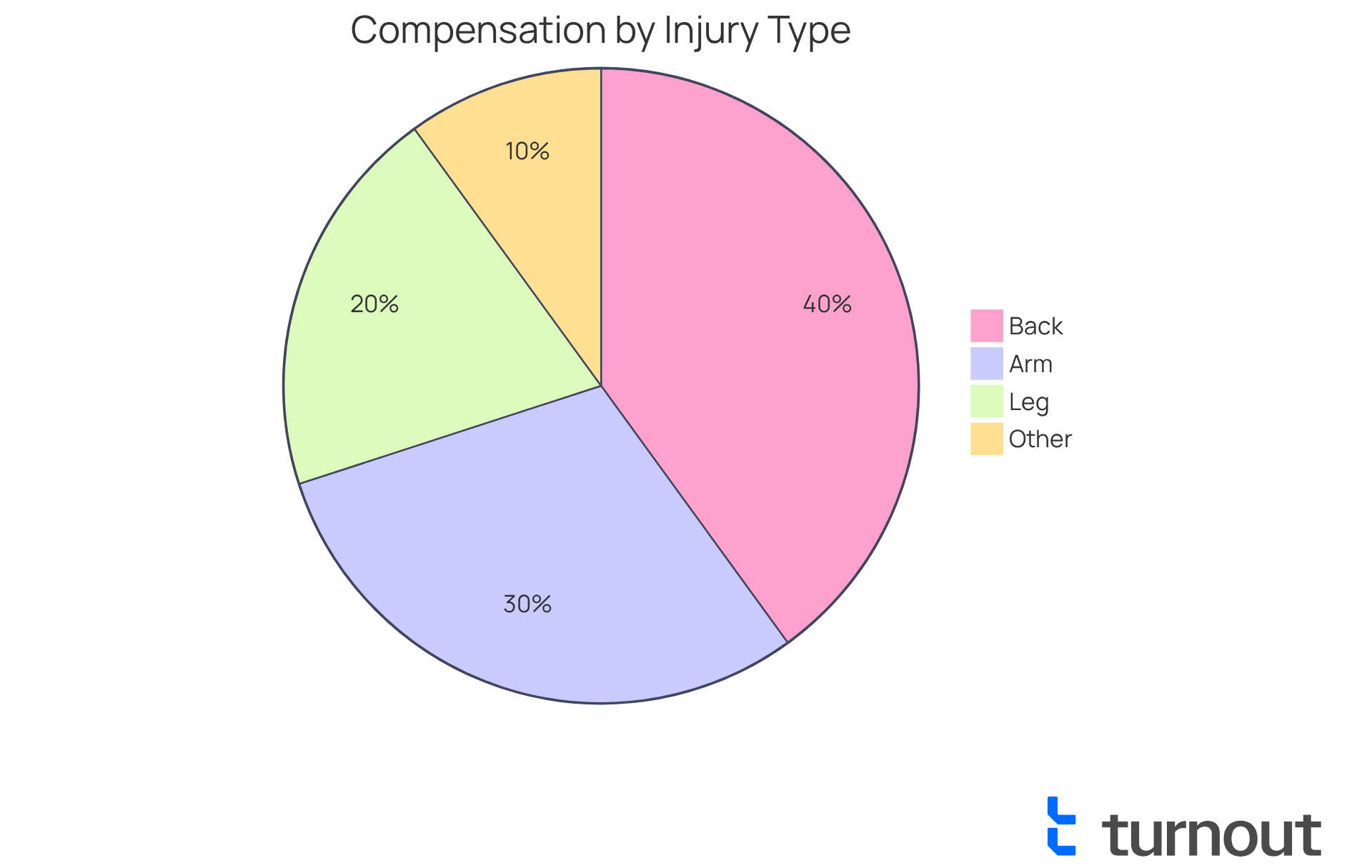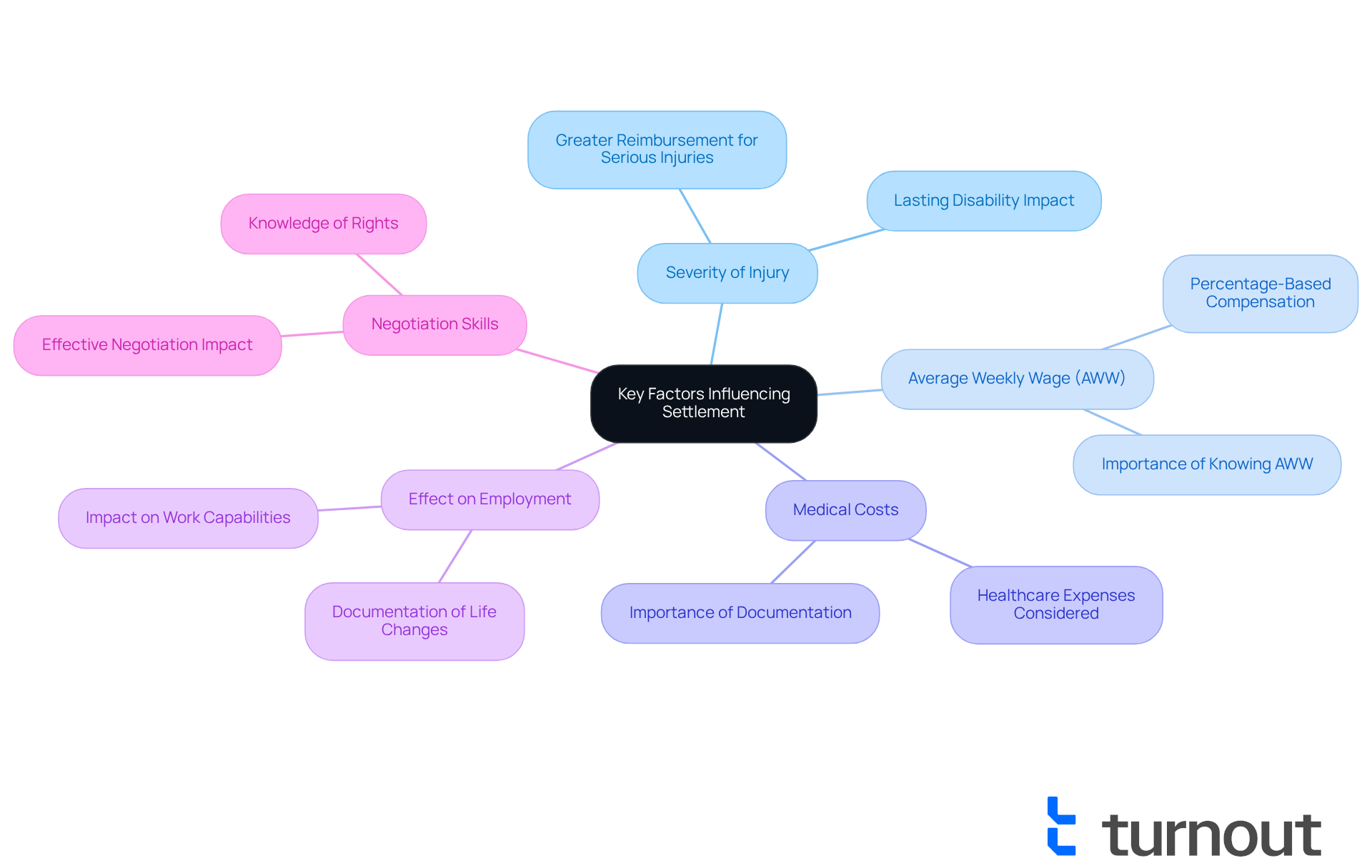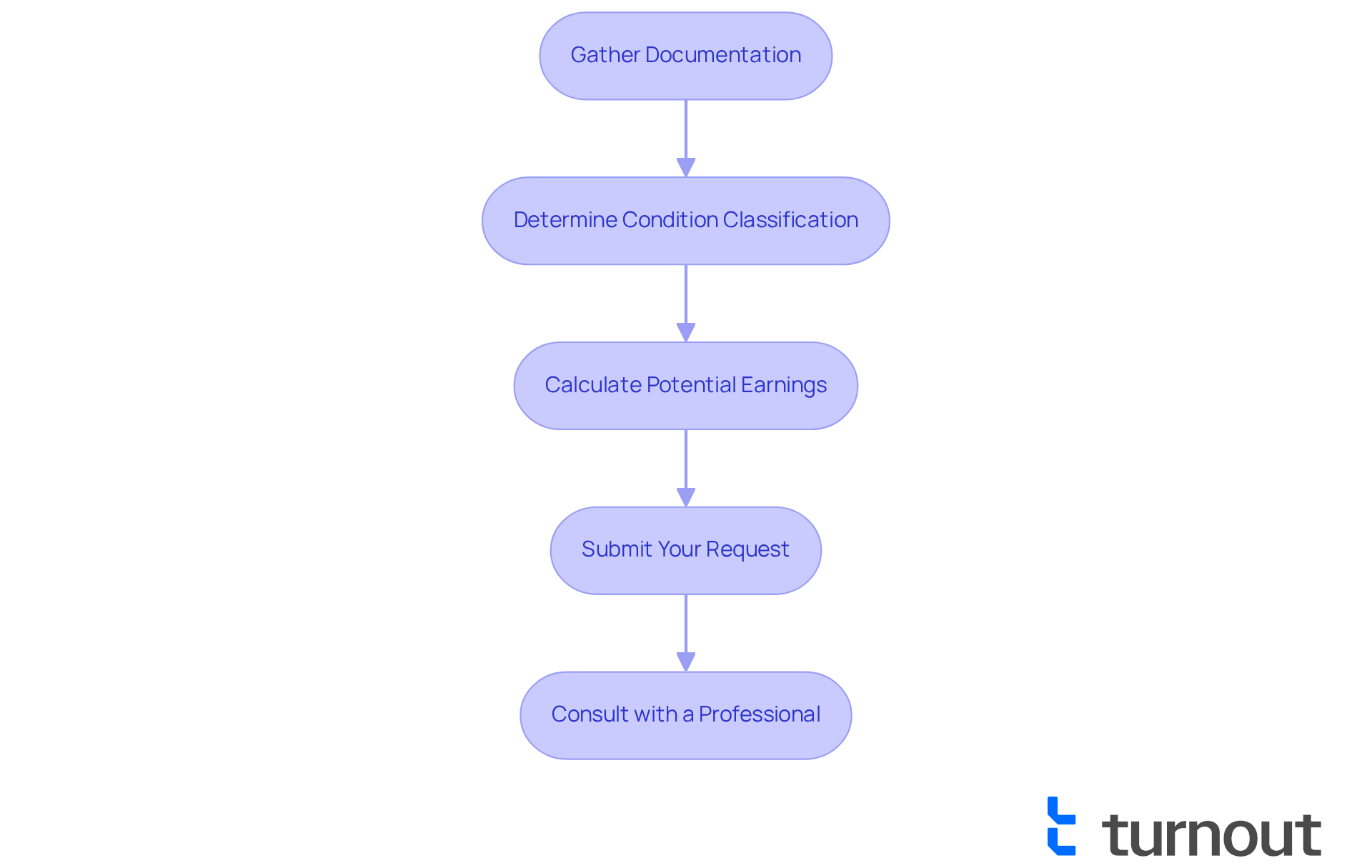Overview
Navigating the Illinois Workers' Compensation Settlement Chart can feel overwhelming, especially when dealing with job-related injuries. We understand that this process is not just about numbers; it's about your well-being and future. This article provides essential insights into how compensation amounts are determined, taking into account factors like injury severity and average weekly wage.
Accurate documentation is crucial in this journey. By understanding the settlement process, you can maximize your potential payouts. Remember, you are not alone in this; we're here to help you every step of the way.
As you explore this information, reflect on your own experiences. What challenges have you faced? How can this knowledge empower you to advocate for yourself? Together, we can navigate this path towards securing the compensation you deserve.
Introduction
Navigating the aftermath of a workplace injury can be incredibly challenging. Understanding the intricacies of the Illinois Workers' Comp Settlement Chart can be a game-changer for you during this difficult time. This essential tool not only outlines potential compensation amounts based on various injuries but also helps you grasp the nuances of your specific situation.
However, it's common to feel overwhelmed with frequent updates and the complexity of factors influencing settlements. How can you ensure that you are maximizing your claim? Exploring the settlement chart reveals not just payment structures, but also critical elements that can significantly impact the outcome of your claim.
This understanding is vital for anyone seeking fair compensation. Remember, you're not alone in this journey; we're here to help you navigate these complexities and advocate for what you deserve.
Understand the Illinois Workers' Comp Settlement Chart
We invite you to explore the Illinois workers comp settlement chart, which is a vital tool that can help you understand your potential payment. This essential resource outlines payment amounts for various job-related injuries, categorizing ailments by body parts and assigning a specific number of weeks of compensation for each type of injury. For instance, did you know that injuries to the back may have a different reimbursement rate compared to those affecting the arm or leg?
It's important to note that the highest and lowest rates for Worker’s Compensation in Illinois are updated twice a year, in January and July. Staying informed about these changes is crucial for understanding the benefits you may qualify for. You can easily access the latest version of the Illinois workers comp settlement chart through the Illinois Workers' Compensation Commission's website or other trusted resources.
We encourage you to review the chart thoroughly, focusing on the sections that relate to your specific situation. Remember, you are not alone in this journey, and we’re here to help you navigate through it.

Identify Key Factors Influencing Your Settlement
Several essential elements can significantly influence the size of your workers' payout. Understanding these factors can help you navigate this challenging time:
-
Severity of Injury: We understand that the more serious your injury, the greater the possible reimbursement. Injuries leading to lasting disability often result in larger compensation amounts, which can provide some relief.
-
Average Weekly Wage (AWW): Your AWW is crucial in determining your compensation. It’s common to feel overwhelmed, but knowing this figure is vital as the agreement is often based on a percentage of your AWW.
-
Medical Costs: All healthcare expenses related to your condition will be considered in your compensation. Make sure to keep detailed records of all medical treatments and expenses, as this documentation is essential for your claim.
-
Effect on Employment: If your condition affects your ability to work or perform daily tasks, this may lead to a larger compensation. We encourage you to document how your injury has impacted your life and work capabilities, as this information can be pivotal.
-
Negotiation Skills: Your ability to negotiate effectively can also influence the final compensation amount. Being well-informed about your rights and the Illinois workers comp settlement chart can strengthen your negotiating position, empowering you throughout this process.
Remember, you are not alone in this journey. We’re here to help you every step of the way.

Apply the Settlement Chart to Your Claim Process
Navigating the Illinois workers comp settlement chart may seem overwhelming, but we are here to assist you throughout the process. By following these supportive steps, you can take control of your claim:
-
Gather Documentation: Start by collecting all relevant documents, such as medical records, wage statements, and any correspondence related to your condition. This foundational step is crucial.
-
Determine your condition classification: Next, use the Illinois workers comp settlement chart to identify where your condition fits within the categories. Understanding this will provide you with a baseline for possible remuneration, helping you feel more informed.
-
Calculate potential earnings based on your injury classification and your Average Weekly Wage (AWW) by using the Illinois workers comp settlement chart. This will give you a realistic expectation of what you might receive, alleviating some uncertainty.
-
Submit Your Request: When you're ready to submit your request, include the reimbursement amount you've calculated based on the Illinois workers comp settlement chart. Ensure that all documentation supports your assertion; this will strengthen your claim.
-
Consult with a Professional: If you can, consider consulting with a professional specializing in workers' compensation. They can review your claim and ensure all aspects are covered, providing you with additional insights and guiding you through any complexities.
We understand that this journey can be challenging, but remember, you are not alone. Taking these steps can empower you to advocate for your needs and secure the support you deserve.

Troubleshoot Common Issues with the Settlement Chart
Navigating the Illinois workers comp settlement chart can be challenging, and it's common to face several issues along the way. We’re here to help you troubleshoot them with care and understanding:
-
Inaccurate Injury Classification: If you suspect your injury has been misclassified, gather additional medical documentation and consult with a healthcare professional to clarify the severity and nature of your injury. Misclassification can lead to significant discrepancies in your settlement. Remember, statistics show that misclassification errors can notably affect the outcomes of requests.
-
Discrepancies in Wage Calculations: If your Average Weekly Wage (AWW) appears incorrect, take a moment to review your pay stubs and tax documents. Should discrepancies persist, reach out to your employer for clarification. Accurate wage calculations are crucial for determining your benefits, and it's important to ensure everything aligns correctly.
-
Lack of Medical Documentation: Ensure you have comprehensive medical records to substantiate your request. If you’re missing documents, don’t hesitate to contact your healthcare provider to obtain copies. Insufficient medical records are a frequent cause for denials, with 76.7% of all workers’ compensation requests submitted over the past five years being approved. You deserve to have your case supported by the right documentation.
-
Request Denials: If your request is denied, carefully review the reasons provided. It’s common for requests to be rejected due to inadequate documentation or erroneous details. Address these issues and resubmit your request promptly. Statistics indicate that nearly one in four submissions are unsuccessful, emphasizing the importance of comprehensive documentation. You’re not alone in this process; many face similar challenges.
-
Negotiation Challenges: If you find negotiations difficult, consider seeking assistance from a professional who can advocate on your behalf. They can help you present your case more effectively and negotiate a fair settlement. Real-life examples show that individuals who engage professionals often achieve better outcomes in their claims, particularly in resolving injury classification disputes. Remember, seeking help is a sign of strength, and you deserve support in this journey.

Conclusion
Understanding the Illinois Workers' Comp Settlement Chart is crucial for anyone facing the challenges of workers' compensation claims. This resource not only clarifies potential compensation amounts based on specific injuries but also empowers you to take control of your claims. By familiarizing yourself with this chart, you can make informed decisions and better advocate for your rights.
We understand that various factors influence settlement amounts, such as the severity of the injury, average weekly wage, and the impact on employment. It's common to feel overwhelmed by these complexities. The necessity of thorough documentation and effective negotiation strategies cannot be overstated. Each step in the claim process, from gathering relevant documents to consulting professionals, plays a vital role in achieving a fair settlement.
Ultimately, the Illinois Workers' Comp Settlement Chart serves as an essential tool to ensure you receive the compensation you deserve. By understanding its intricacies and applying its guidelines, you can navigate the workers' compensation landscape more effectively. Taking proactive steps and seeking assistance when needed can significantly enhance your chances of a successful claim. Remember, knowledge is power in your pursuit of justice and support. We're here to help you every step of the way.
Frequently Asked Questions
What is the Illinois workers' comp settlement chart?
The Illinois workers' comp settlement chart is a resource that outlines payment amounts for various job-related injuries, categorizing ailments by body parts and assigning a specific number of weeks of compensation for each type of injury.
How does the settlement chart categorize injuries?
The chart categorizes injuries by body parts, indicating that different types of injuries, such as those to the back, arm, or leg, may have different reimbursement rates.
How often are the reimbursement rates updated in Illinois?
The highest and lowest rates for Worker’s Compensation in Illinois are updated twice a year, specifically in January and July.
Where can I access the latest version of the Illinois workers' comp settlement chart?
The latest version of the chart can be accessed through the Illinois Workers' Compensation Commission's website or other trusted resources.
Why is it important to review the Illinois workers' comp settlement chart?
Reviewing the chart is important for understanding the benefits you may qualify for based on your specific situation and the types of injuries you may have sustained.




